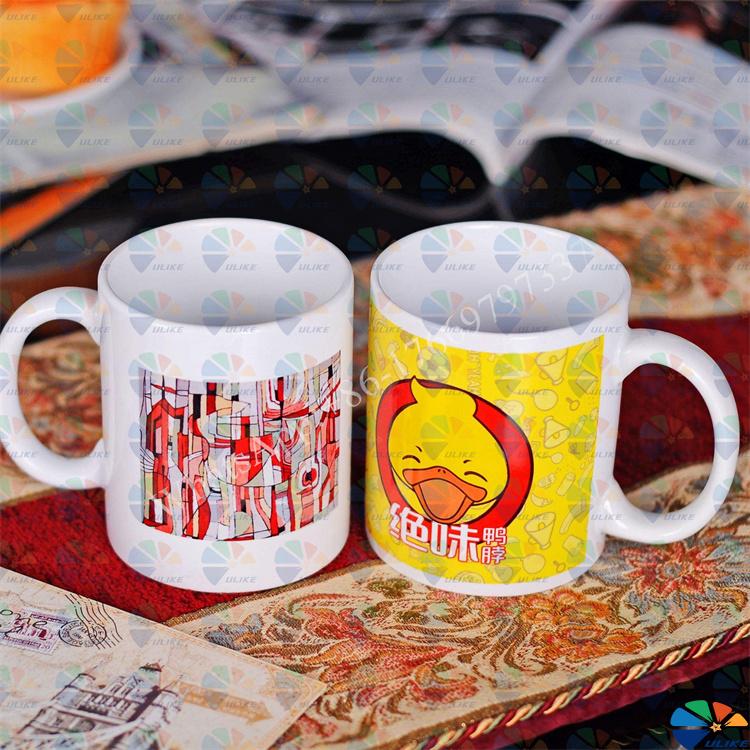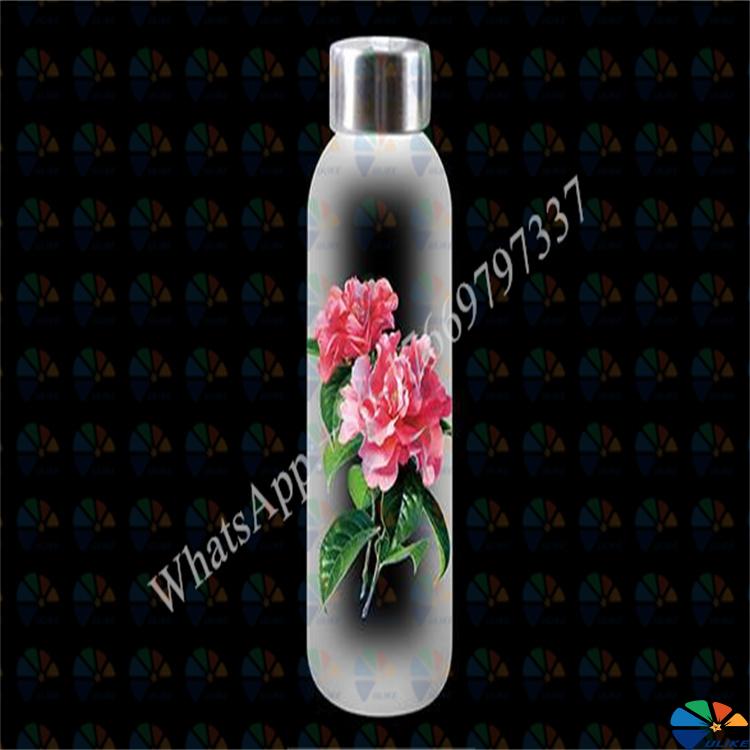PET Heat Transfer Film for Glass Products: Applications and Industry Impact
PET heat transfer film has increasingly become an integral part of the glass products industry, offering a versatile and efficient method for decorating and enhancing the functionality of glass items. This article delves into the specific applications of PET heat transfer film for glass products, outlining its benefits and potential impact on the industry.
-
Decorative Glassware:
-
PET heat transfer film is widely used to apply decorative patterns, logos, and designs onto glassware. This includes items such as drinking glasses, bottles, vases, and decorative panels. The film allows for the transfer of intricate designs, including multicolored images, metallic finishes, and even holographic effects. The precision and quality of these transfers make them ideal for producing high-end glassware that meets consumer demand for aesthetic appeal.
-
Architectural Glass:
-
In architectural applications, PET heat transfer film is used to create decorative and functional features on glass panels, windows, and doors. This can include everything from privacy films with frosted or etched designs to colored and patterned films that enhance the visual appeal of glass facades. The ability to customize glass surfaces with such films allows architects and designers to achieve unique aesthetic effects without compromising the structural integrity of the glass.
-
Branded Packaging:
-
PET heat transfer film for glass products is also extensively used in the packaging industry, particularly for branding and labeling glass bottles and containers. This is common in industries like beverages, cosmetics, and pharmaceuticals, where branding plays a critical role in product differentiation. The film provides a durable and high-quality finish that can withstand handling, moisture, and temperature variations, ensuring that the branding remains intact throughout the product's lifecycle.
-
Safety and Functional Enhancements:
-
Beyond decoration, PET heat transfer film can also be used to apply functional layers to glass products. This includes adding UV protection, anti-glare coatings, or even anti-shatter properties to glass surfaces. Such enhancements are particularly important in sectors like automotive and construction, where the safety and performance of glass components are paramount.
Benefits of PET Heat Transfer Film for Glass Products
-
Precision and Detail:
-
One of the key advantages of using PET heat transfer film is its ability to transfer highly detailed and precise designs onto glass surfaces. This is especially beneficial for producing complex patterns or intricate logos that would be difficult or impossible to achieve with traditional methods.
-
Durability:
-
The application of PET heat transfer film ensures that the designs and coatings applied to glass products are durable and long-lasting. The film forms a strong bond with the glass surface, resisting wear and tear, fading, and environmental exposure.
-
Cost-Effectiveness:
-
Compared to other methods of decorating or enhancing glass products, such as screen printing or sandblasting, PET heat transfer film offers a more cost-effective solution. It allows for high-volume production with consistent quality, reducing material waste and production time.
-
Environmental Sustainability:
-
As sustainability becomes a priority in manufacturing, PET heat transfer film offers an eco-friendly alternative. The process generates less waste compared to traditional decoration methods, and innovations in film materials are leading to the development of recyclable and biodegradable options.
Future Trends in PET Heat Transfer Film for Glass Products
-
Integration with Smart Technologies:
-
As the demand for smart glass solutions grows, PET heat transfer film could be integrated with technologies that add functionalities such as touch sensitivity, light modulation, or embedded displays to glass surfaces. This would open new possibilities in sectors like consumer electronics and smart home systems.
-
Expansion in Architectural Applications:
-
The architectural sector is likely to see increased use of PET heat transfer film as designers and builders seek innovative ways to enhance both the aesthetic and functional properties of glass. This includes the development of films that offer advanced thermal insulation, energy efficiency, and security features.
-
Customization and Personalization:
-
The growing trend toward personalized products is expected to drive demand for PET heat transfer film that can easily be customized for individual designs or small batch production. This will be particularly relevant in the consumer goods and luxury markets, where bespoke glassware and packaging are highly valued.
-
Sustainability Focus:
-
The push towards more sustainable manufacturing practices will likely lead to further innovation in PET heat transfer film materials and processes, with a focus on reducing environmental impact while maintaining high performance standards.
Conclusion
PET heat transfer film for glass products offers a powerful tool for enhancing both the aesthetic and functional qualities of glass items across various industries. Its ability to deliver detailed and durable designs, combined with cost-effectiveness and environmental benefits, makes it a preferred choice for manufacturers and designers alike. As the technology evolves, PET heat transfer film is set to play a crucial role in the future of glass product design, offering new possibilities for innovation and customization.


![af]() Afrikaans
Afrikaans![sq]() Albanian
Albanian![am]() Amharic
Amharic![ar]() Arabic
Arabic![fr]() French
French![es]() Spanish
Spanish![ru]() Russian
Russian![de]() German
German![hy]() Armenian
Armenian![it]() Italian
Italian![ja]() Japanese
Japanese![ko]() Korean
Korean![pt]() Portuguese
Portuguese![hi]() Hindi
Hindi![az]() Azerbaijani
Azerbaijani![ro]() Romanian
Romanian![pl]() Polish
Polish![th]() Thai
Thai![el]() Greek
Greek![eu]() Basque
Basque![en]() English
English![zh-CN]() Chinese (Simplified)
Chinese (Simplified)![zh-TW]() Chinese (Traditional)
Chinese (Traditional)![be]() Belarusian
Belarusian![bn]() Bengali
Bengali![bs]() Bosnian
Bosnian![bg]() Bulgarian
Bulgarian![ca]() Catalan
Catalan![ceb]() Cebuano
Cebuano![ny]() Chichewa
Chichewa![co]() Corsican
Corsican![hr]() Croatian
Croatian![cs]() Czech
Czech![da]() Danish
Danish![nl]() Dutch
Dutch![eo]() Esperanto
Esperanto![et]() Estonian
Estonian![tl]() Filipino
Filipino![fi]() Finnish
Finnish![fy]() Frisian
Frisian![gl]() Galician
Galician![ka]() Georgian
Georgian![gu]() Gujarati
Gujarati![ht]() Haitian Creole
Haitian Creole![ha]() Hausa
Hausa![haw]() Hawaiian
Hawaiian![iw]() Hebrew
Hebrew![hmn]() Hmong
Hmong![hu]() Hungarian
Hungarian![is]() Icelandic
Icelandic![ig]() Igbo
Igbo![id]() Indonesian
Indonesian![ga]() Irish
Irish![jw]() Javanese
Javanese![kn]() Kannada
Kannada![kk]() Kazakh
Kazakh![km]() Khmer
Khmer![ku]() Kurdish (Kurmanji)
Kurdish (Kurmanji)![ky]() Kyrgyz
Kyrgyz![lo]() Lao
Lao![la]() Latin
Latin![lv]() Latvian
Latvian![lt]() Lithuanian
Lithuanian![lb]() Luxembourgish
Luxembourgish![mk]() Macedonian
Macedonian![mg]() Malagasy
Malagasy![ms]() Malay
Malay![ml]() Malayalam
Malayalam![mt]() Maltese
Maltese![mi]() Maori
Maori![mr]() Marathi
Marathi![mn]() Mongolian
Mongolian![my]() Myanmar (Burmese)
Myanmar (Burmese)![ne]() Nepali
Nepali![no]() Norwegian
Norwegian![ps]() Pashto
Pashto![fa]() Persian
Persian![pa]() Punjabi
Punjabi![sm]() Samoan
Samoan![gd]() Scottish Gaelic
Scottish Gaelic![sr]() Serbian
Serbian![st]() Sesotho
Sesotho![sn]() Shona
Shona![sd]() Sindhi
Sindhi![si]() Sinhala
Sinhala![sk]() Slovak
Slovak![sl]() Slovenian
Slovenian![so]() Somali
Somali![su]() Sudanese
Sudanese![sw]() Swahili
Swahili![sv]() Swedish
Swedish![tg]() Tajik
Tajik![ta]() Tamil
Tamil![te]() Telugu
Telugu![tr]() Turkish
Turkish![uk]() Ukrainian
Ukrainian![ur]() Urdu
Urdu![uz]() Uzbek
Uzbek![vi]() Vietnamese
Vietnamese![cy]() Welsh
Welsh![xh]() Xhosa
Xhosa![yi]() Yiddish
Yiddish![yo]() Yoruba
Yoruba![zu]() Zulu
Zulu



